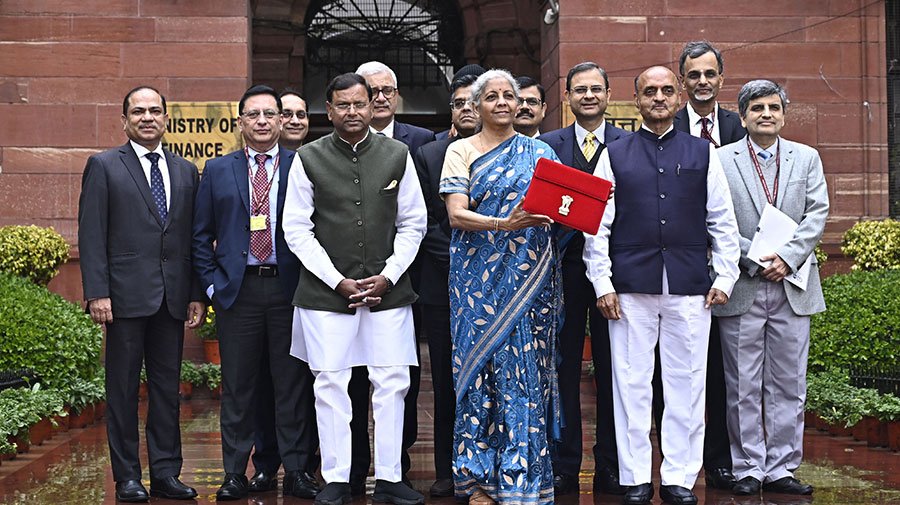
The Interim Union Budget 2024-25 laid the fiscal roadmap and solid foundations for the Amrit Kaal with the guiding principle of ‘Sabka Saath, Sabka Vikas, and Sabka Vishwas’ and a nationwide approach of “Sabka Prayas”. The government’s approach to development covered all aspects of inclusivity, social inclusivity and geographical inclusivity. With the aim of achieving a fiscal deficit level below 4.5% of the GDP by 2025-26, the fiscal deficit for 2024-25 has been set at 5.1%, which is significantly lower than the revised 5.8% budgeted for 2023-24. For FY 2024-25 the total expenditure and the fiscal deficit is estimated at Rs. 47.6 lakh crore and Rs. 16.8 lakh crore respectively. The lower government borrowings are expected to facilitate better availability of credit for the private sector.
Additionally, the capital expenditure outlay for the next year will be increased by 11.1% to Rs 11.11 trillion, representing 3.4% of the GDP. Higher capex is expected to support growth and spur investments. The three major economic railway corridors including a) energy, mineral and cement corridors, b) Port connectivity, and c) high traffic density corridors –under PM Gati Shakti will provide a credible push towards reducing logistics costs and improving lead time.
The estimated tax buoyancy for FY24 is 1.5, while for FY25 it is estimated at 1.1. Furthermore, the gross tax revenue is expected to grow by 12.5% in FY24 to Rs 34.3 lakh crore, surpassing the budgeted Rs 33.60 lakh crore. The rise in tax revenue indicates a robust and increasingly compliance-based tax system. The time period from 2014-23 marked a golden era as FDI inflow was USD 596 billion, double compared to the inflow in 2005-13.
Moreover, India’s commitment to net zero emissions by 2070 is reflected in encouraging the adoption of e-buses for public transport; strengthening the e-vehicle ecosystem by supporting manufacturing and charging, phased mandatory blending of compressed biogas in compressed natural gas for transport and piped natural gas for domestic purpose.
A corpus of Rs 1 Lakh crore will be established with a 50-year interest-free loan to help finance research thereby providing a massive push to the private sector innovation and research. In addition, to boost domestic chip and electronic manufacturing the interim budget proposed a more than 70 % increase in allocation for both sectors.
The direct and indirect rates including import duties have been retained. The direct tax demands upto Rs 25000 pertaining to the period upto FY 2009-10 and upto Rs 10000 for FY 2010 11 to FY 2014-15 has been withdrawn providing relief to crores of startup. Certain tax benefits to startups and investments made by sovereign wealth or pension funds as also tax exemption on certain income of some International Financial Services Centre (IFSC) units are expiring on March 31, 2024 were extended. The extension of tax benefits ensures that startups have the financial impetus to continue their innovative endevours, contributing to the overall growth of the economy.
The agriculture sector demonstrates a proactive stance towards agricultural growth through the encouragement of post-harvest investment and the provision of support to dairy farmers. The government’s commitment to the welfare of the farming community is evident in its initiatives to control diseases and offer crop insurance. Furthermore, the extension of healthcare facilities to Asha and Anganwadi workers under Ayushman Bharat, along with the establishment of hospitals in all districts, showcases a strong dedication to enhancing healthcare accessibility. In addition, the implementation of a vaccination program for cervical cancer and the introduction of a housing plan for the middle class contribute to a comprehensive approach to development.
The increased allocation under MGNREGA increased by 43 % to Rs 86000 crore is expected to spur consumption. Root-top solarization will cut down electricity bill for one crore households increasing their disposable income. The increased allocation under LAKHPATI DIDI scheme from 2 crore to 3 crore will empower 83 lakh self-help groups (SHGs) with nine crore women transforming rural landscapes, creating a million lakhpati didis. A significant focus on initiatives like Nano DAP and Aatmanirbhar Oil Seeds Abhiyan is expected to boost self-reliance and import susbsituition in oil seeds.
To summarize, the interim budget for the fiscal year 2024-25 has introduced a multitude of proposals spanning various sectors such as infrastructure, housing, microfinance, tourism, energy, and defense. The budget’s roadmap is in accordance with the acronym GDP, which represents Governance, Development, and Performance. With the vision of “Sabka saath Sabka Vikas,” the government aims to empower marginalized groups including the poor, women, youth, and farmers. By 2047, the government envisions a developed India, focusing on prosperity, modern infrastructure, and equal opportunities for all citizens. Furthermore, in line with the objective of achieving net zero emissions by 2070, the government has announced initiatives to promote green energy, electric vehicles, and bio manufacturing.
The key highlights of the Budget are as follows:
(c) High traffic density corridors
Leave a Reply